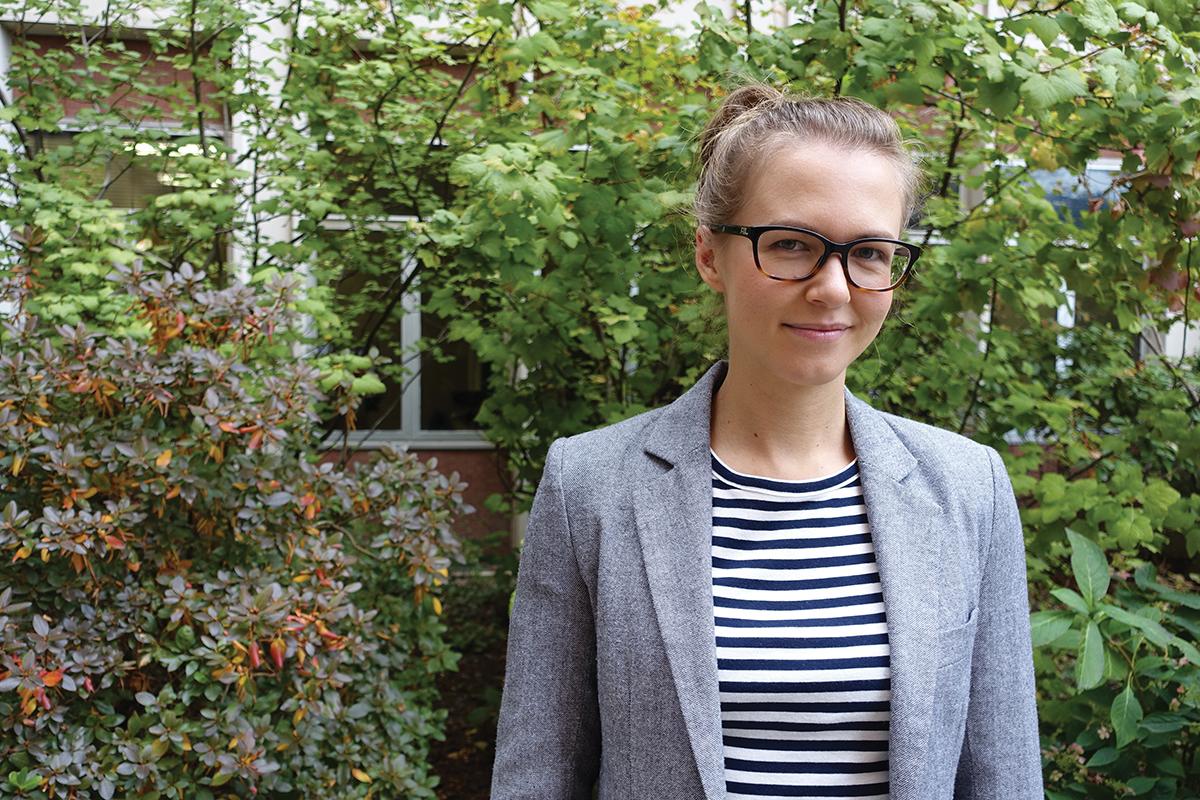
by Carmel Ohman, PhD Candidate, Department of English
I’ve been thinking a lot about what it means to engage creative texts by and about Black women in this historic moment of collective action. Toni Morrison famously wrote that the relationship between artist and reader is central to Black art and storytelling: “it is the affective and participatory relationship between the artist or the speaker and the audience that is of primary importance.”1 The audience, like the text, needs to work. For Morrison, the engaged, deep-feeling work of reading is part of the work of Black liberation.
I was slated to write about Alicia Garza’s Lorwin Lecture series talk at the end of this 2019-2020 academic year. Garza was to discuss her Black queer feminist work as cofounder, with Patrisse Khan-Cullors and Opal Tometi, of Black Lives Matter. In the absence of Garza’s visit, we’re left to work through the very circumstances—of structural anti-Blackness, misogyny, heterosexism, capitalist exploitation—that make the ongoing movement for Black lives urgently necessary. COVID-19’s disproportionate health and economic impacts on Black Americans; the murders of Black trans women Dominique “Rem’mie” Fells and Riah Milton; the murder of Ahmaud Arbery; the police murders of Breonna Taylor, Tony McDade, George Floyd, Atatiana Jefferson, and Rayshard Brooks.
The work of Black feminist liberation lives in the massive spring 2020 uprisings demanding justice for these and too many other state-sanctioned deaths. It lives in the Black Trans Lives Matter rallies leading up to June’s historic Supreme Court decision affirming gender and sexual identity employment protections. It lives in the push to remove police from Eugene 4J schools, and in the Eugene BLM Resources document,2 lovingly compiled.
The work of Black feminist liberation lives, too, in written and visual texts by and about Black women, cis and trans. Black art and Black feminist reading are linked tools for the work of nourishing and teaching freedom dreams.3 And as Barbara Smith says, Black feminist literary and cultural criticism requires working to read texts on their own terms.4 This means reckoning with the anti-Blackness, misogyny, and heterosexism behind common vocabularies of sex and gender. Black women in America have never had easy claim to the benefits of categories like “reproduction,” “heterosexuality,” or “motherhood”—Black women’s bodies and sexualities have been routinely scapegoated as the perceived source of social ills.5 So Black feminist texts are forging different vocabularies. Reading Black feminist texts on their own terms also means sitting with what Black feminist hip-hop scholar Joan Morgan describes as “the complex, messy, sticky, and even joyous negotiations of agency and desire that are irrevocably twinned with [Black women’s] pain.”6 Reading for trauma alone is itself a violence that fails to honor complex Black pleasures and modes of flourishing.
My dissertation, “Writing Erotic Freedom in Black Feminist Fiction and TV, 1973-2020,” examines creative efforts to liberate Black sex and self in the face of state-sanctioned assaults on Black lives. It considers how Black feminist writers in the post-Civil Rights era, from Toni Morrison to Issa Rae, turn to fiction and TV to write alternative Black erotic worlds.
My dissertation project spans two periods of amplified political conservatism and social services defunding: the New Right in the 1970s-1980s, and the 2016-2020 presidential administration of Donald J. Trump. Analyzing creative texts that participate in contemporaneous Black feminist and Black liberation movements, “Writing Erotic Freedom” draws out connections between iconic African American fiction of the late-20th century and Black diasporic T.V. of the 2010s. It demonstrates that Toni Morrison’s novels Sula (1973) and Jazz (1992) and Ntozake Shange’s for colored girls who have considered suicide / when the rainbow is enuf (1975) are in salient if unlikely dialogue with contemporary comedic and surreal TV shows including insecure (2016-), Random Acts of Flyness (2018-), and A Black Lady Sketch Show (2019-). Differing widely in form and content, these texts register and produce the literary and televisual mainstream while demanding a reckoning with the state-sanctioned scapegoating of Black sexualities. Together they display a Black feminist commitment to denaturalizing historically contingent sexual expressions of anti-Blackness and misogyny while enacting alternative worlds of intimacy, pleasure, and erotic freedom through popular art.
Reflecting on this year of “unprocessed” and “unprocessable” harm, I am grateful for Black feminist work that both names systems of violence and enacts beautiful refusals.7 I am grateful to my new advisor, Courtney Thorsson, for helping me do the work of reading deeply and carefully, and to Mary Wood, especially for supporting me through the CSWS grant application process. Thanks also to Jiesha Stephens and Jalen Thompson, fellow organizers of “Rethinking Popular Performance: A Symposium on Race, Media, and Visual Culture” (dates TBA)—this upcoming event is such a powerful opportunity to read differently and better in the service of Black feminist liberation! I’m also incredibly humbled to have my article—“Undisciplining the Black Pussy: Pleasure, Black Feminism, and Sexuality in Issa Rae’s insecure”—published in The Black Scholar’s 50th anniversary issue 50.2 on “Black Radical Pleasure.” This article is in many ways a testament to Shoniqua Roach’s guidance and enduring impacts at UO. Finally, thanks to CSWS for the research support and for the community; CSWS has helped guide my way to a project that is, for me, deeply felt.
—Carmel Ohman is a doctoral candidate in English.
References
1 Toni Morrison, “Rootedness: The Ancestor as Foundation,” in Black Women Writers, 1950-1980, ed. Mari Evans (New York: Anchor Doubleday, 1984): 341.
2 tinyurl.com/eugene-blm-resources
3 Robin DG Kelley, Freedom Dreams: The Black Radical Imagination (Boston: Beacon Press, 2002).
4 Barbara Smith, “Toward a Black Feminist Criticism,” The Radical Teacher no. 7 (1978): 23 (reprint of essay first published in Conditions 1977).
5 Cathy Cohen, “Punks, Bulldaggers, and Welfare Queens,” GLQ 3 (1997): 455; Hortense Spillers, “Mama’s Baby, Papa’s Maybe,” Diacritics 17, no. 2 (1987): 67.
6 Joan Morgan, “Why We Get Off: Moving Towards a Black Feminist Politics of Pleasure,” The Black Scholar 45, no. 4 (2015): 36.
7 Zadie Smith, “What Do We Want History to Do to Us?” The New York Review of Books (February 27, 2020) https://www.nybooks.com/articles/2020/02/27/kara-walker-what-do-we-want-history-to-do-to-us/ (accessed June 1, 2020).

